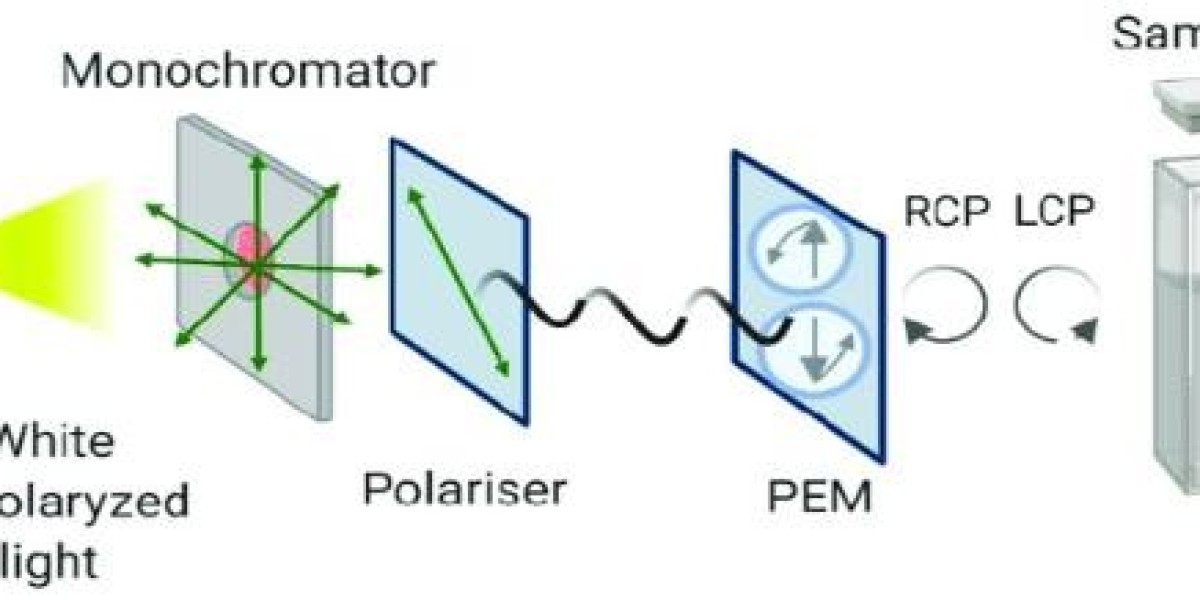Circular dichroism (CD), a high-powered analytical technique employed in the realm of biomolecular structure analysis, involves the differential absorption of left and right-handed circularly polarized light by chiral molecules, allowing for the probing of the secondary, tertiary, and quaternary structures of proteins and other biomolecules within a solution. This particular method provides an abundance of information relating to the structural features, stability, folding, and interactions of said biomolecules. It is an invaluable tool in the field, utilized to gain deeper insight into the complexities of biomolecular structures, enabling a greater understanding of their functions and potential applications.
Principles of Circular Dichroism
The technique of CD spectroscopy works by measuring the difference in absorbance of LCP and RCP as they traverse through a sample containing chiral molecules. This differential absorbance, known as the circular dichroism signal, is proportionate to the molar ellipticity, a measure of the magnitude of the rotation of the electric field vector of the light. The molar ellipticity is reliant on various factors, including the concentration of chiral molecules, the path length of the sample, and the specific rotation of the molecule. CD measurements are commonly reported in units of molar ellipticity per residue or gram of protein, providing valuable information about the biomolecular structure being analyzed.
One of the primary uses of CD spectroscopy is to provide insight into the secondary structure of proteins. The peptide backbone's conformational arrangement determines secondary structure elements such as α-helices, β-sheets, and random coils, and these elements result in characteristic CD spectra. The position and shape of the CD bands in the spectrum can be utilized to estimate the content of each secondary structure element. For instance, α-helices are distinguishable by a negative peak at 222 nm and a positive peak at 208 nm, whereas β-sheets feature a positive peak at 216 nm and a negative peak at 196 nm. Additionally, the CD spectrum can also be employed to track conformational alterations in proteins, such as unfolding or refolding, or variations produced by ligand binding or protein-protein interactions. CD spectroscopy is a versatile and powerful tool in the field of biomolecular structure analysis, providing critical insights into complex structures and their functions.

Schematic representation of the Circular Dichroism instrument configuration (Pignataro et al., 2020).
Circular Dichroism Applications
CD spectroscopy is a versatile tool for the study of proteins, peptides, nucleic acids and other chiral molecules. Some of the major applications of CD spectroscopy in the field of protein research are outlined below:
- Protein secondary structure analysis
This technique is particularly useful for monitoring conformational changes in proteins under different environmental conditions, such as changes in pH, temperature or denaturant concentration.CD can also be used to estimate the amount of each secondary structure element in a protein, providing a useful tool for structural characterization.
- Protein stability and folding
Determine the thermal stability of proteins by monitoring changes in CD spectra as a function of temperature, pH, or chemical denaturant, study the kinetics of protein folding and unfolding, and monitor the effects of mutations on protein stability.
- Protein-protein interactions
Detects changes in CD spectra due to the formation of protein complexes and can be used to measure the affinity and stoichiometry of protein-protein interactions.CD spectroscopy can also be used to study the effect of ligand binding on protein conformation, providing a useful tool for drug discovery and development.
- Conformational analysis of peptides
This technique is particularly useful for studying the conformational preferences of short peptides, such as those involved in protein-protein interactions or peptide hormones.

Circular Dichroism as a tool for the study of protein self-association (Pignataro et al., 2020).
Reference
- Pignataro, María Florencia, María Georgina Herrera, and Verónica Isabel Dodero. "Evaluation of peptide/protein self-assembly and aggregation by spectroscopic methods." Molecules 25.20 (2020): 4854.
Read More: isothermal titration calorimetry










